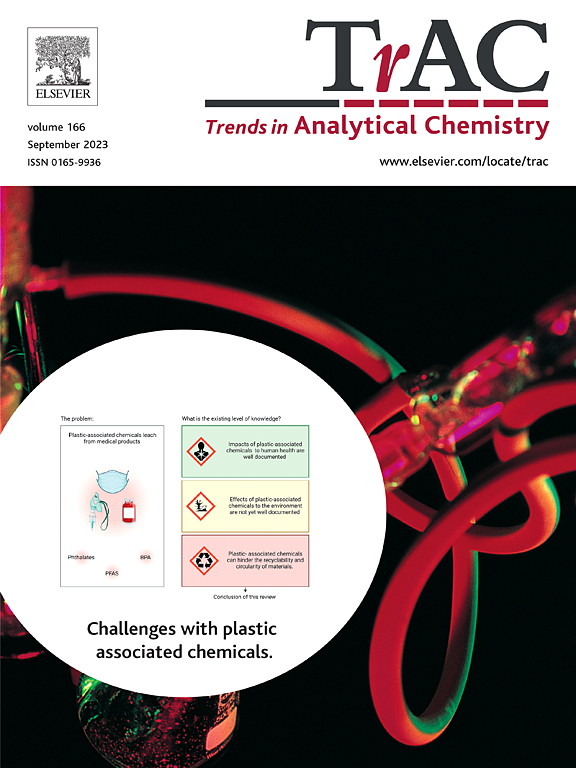Microplastics in animal-derived products and their potential risks to human health
IF 11.8
1区 化学
Q1 CHEMISTRY, ANALYTICAL
引用次数: 0
Abstract
Microplastics, a new type of pollutant widely present in aquatic, terrestrial, and atmospheric environments, have attracted global attention due to their accumulation in organisms and potential toxicity. In recent years, animal products, as an important source of human daily diet and consumer goods, have increasingly faced the risk of microplastic contamination. These microplastics can enter the human body through food consumption or the use of daily products, posing a threat to health. However, there is currently a lack of comprehensive reviews on the impact of microplastic contamination in animal products on human health. This review begins with the sources, migration, and accumulation mechanisms of microplastics, systematically elaborates on the routes through which microplastics enter the human body via animal products and their harmful effects on the body, and summarizes the detection and elimination technologies for microplastics in the environment to ensure the safety of animal products and human health. In summary, microplastics can enter animals through ingestion, gas exchange, and contact, and can remain in animal products, posing potential risks to the human respiratory, digestive, and immune systems. Although existing detection and removal technologies for microplastics have played a role in ensuring the safety of animal products, further optimization is needed to develop more efficient and environmentally friendly methods. In the future, efforts should be strengthened to research pollution prevention and purification technologies for microplastics, reduce their residues in animal products, and thereby effectively safeguard food safety and public health.

求助全文
约1分钟内获得全文
求助全文
来源期刊

Trends in Analytical Chemistry
化学-分析化学
CiteScore
20.00
自引率
4.60%
发文量
257
审稿时长
3.4 months
期刊介绍:
TrAC publishes succinct and critical overviews of recent advancements in analytical chemistry, designed to assist analytical chemists and other users of analytical techniques. These reviews offer excellent, up-to-date, and timely coverage of various topics within analytical chemistry. Encompassing areas such as analytical instrumentation, biomedical analysis, biomolecular analysis, biosensors, chemical analysis, chemometrics, clinical chemistry, drug discovery, environmental analysis and monitoring, food analysis, forensic science, laboratory automation, materials science, metabolomics, pesticide-residue analysis, pharmaceutical analysis, proteomics, surface science, and water analysis and monitoring, these critical reviews provide comprehensive insights for practitioners in the field.
 求助内容:
求助内容: 应助结果提醒方式:
应助结果提醒方式:


